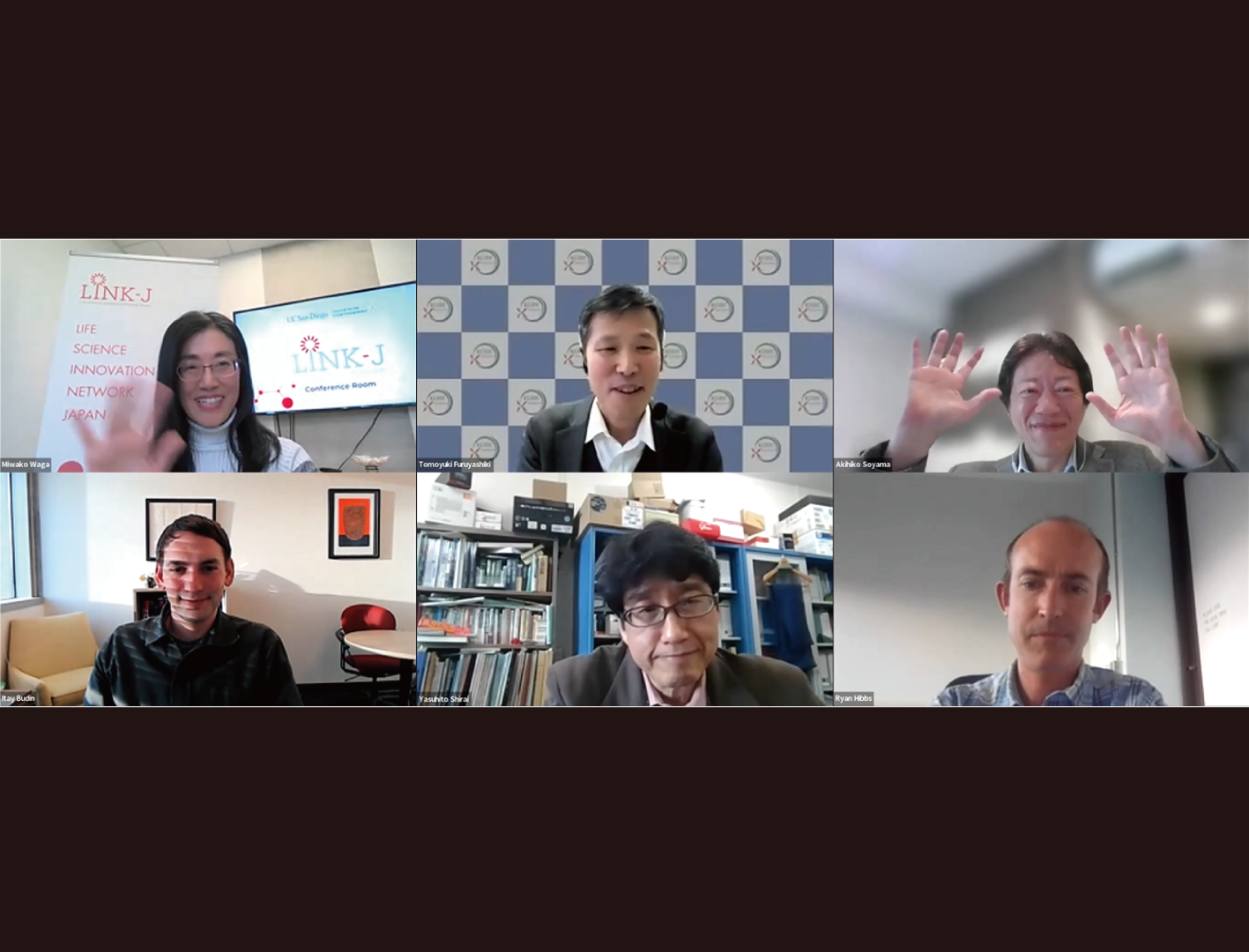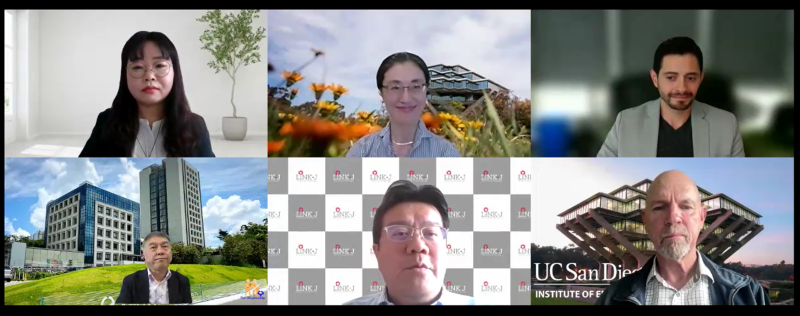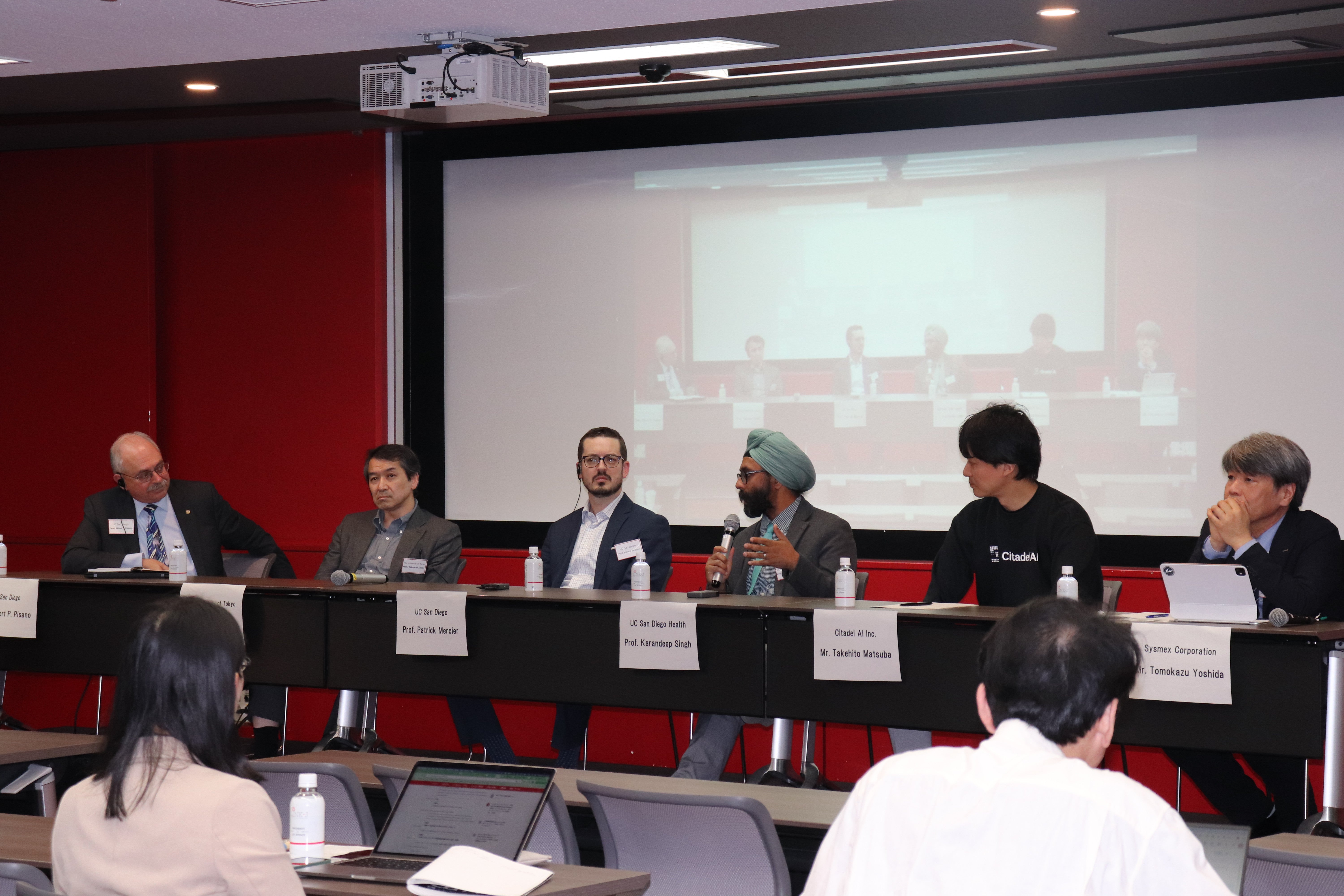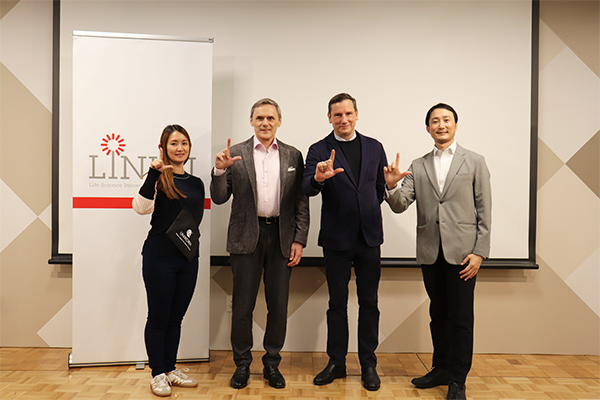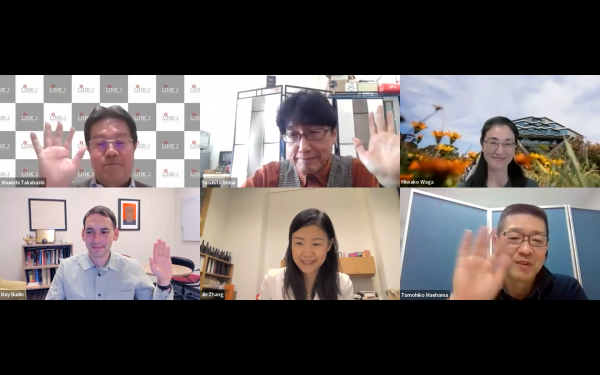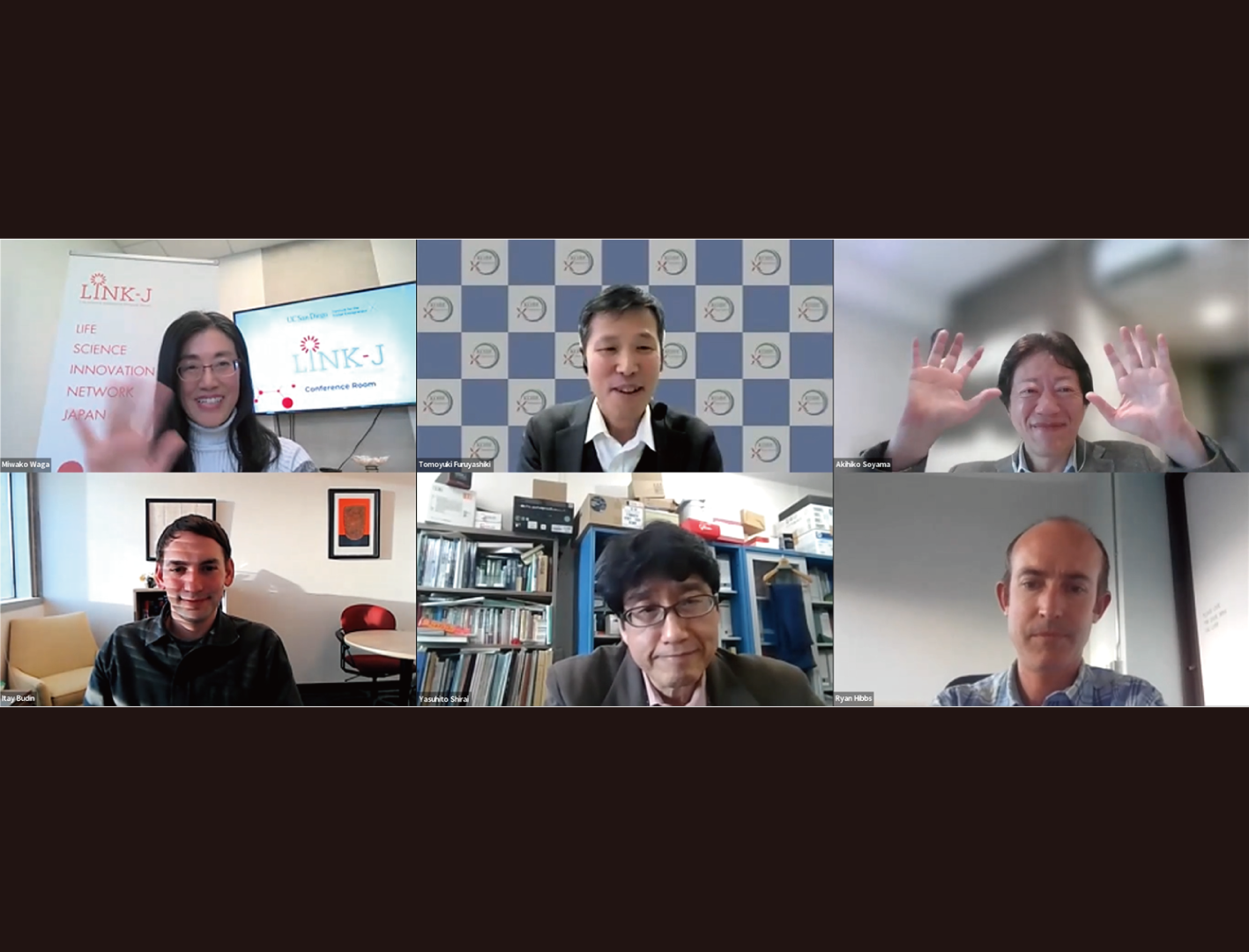LINK-J & UC San Diego Joint Webinar Series #15 with Kobe University "Cell Signaling and Lipid Sciences" Session 4 - Focusing on Novel Methods for Lipid Membrane Research was held on November 22, 2024. (Host: LINK-J, Co-Host: University of California San Diego [UC San Diego])
.png)
Speakers
Dr. Itay Budin, Assistant Professor of Chemistry & Biochemistry and Bioengineering, UC San Diego
Dr. Yasuhito Shirai, Professor and Dean, Graduate School of Agricultural Science, Kobe University
Dr. Christopher Obara, Assistant Professor of Pharmacology and Chemistry & Biochemistry, UC San Diego
Dr. Kenichi Morigaki, Professor, Graduate School of Agricultural Science, Kobe University
Ms. Miwako Waga, Senior Director of International Innovation Outreach, UC San Diego Office of Research and Innovation
Dr. Shunichi Takahashi, Ph.D., President and Chief Operating Officer, LINK-J
Presentations
Dr. Obara's talk
"How to spy on a membrane: Developing and using tools to eavesdrop on communication between organelles"
Membrane-enclosed organelles are the hallmark of eukaryotic cells, forming physically distinct compartments where biochemically incompatible reactions can occur simultaneously. Membranes form complex landscapes whose contact sites are used by cells for poorly understood mechanisms of communication between organelles. Despite the crucial central role in nearly every biological process in eukaryotes, direct observation of membrane structure and composition at these contact sites has proven largely elusive due to limitations in sample preparation, reagent availability, and the spatiotemporal limitations of most microscopy tools. Emerging technologies in cryogenics, electron microscopy, and fluorescence imaging promise to bridge this gap. I will present work derived from three pipelines that correlate information between emerging technologies for understanding the ultrastructure, composition, and dynamics of organelle membranes at contact sites. I will also present how we use these approaches to uncouple fundamental biological aspects of protein sorting and inter-organelle communication at contact sites between the membranes of different organelles.
Dr. Morigaki's talk
"Micropatterned model membrane platform for studying the membrane structures, physicochemical properties, and functions"
The biological membrane is a complex two-dimensional fluid, in which the lateral localization and three-dimensional confinement of membrane-associated molecules are regulated. We have been developing a model system of the biological membrane on a solid substrate by combining a patterned lipid bilayer and nanometric space. A patterned bilayer is lithographically generated from polymerized and natural (fluid) lipid bilayers. The polymeric bilayer acts as a framework to define the geometry of the fluid bilayers and enhance their stability. The fluid bilayers comprise natural lipids and membrane proteins, and retain the physicochemical properties the biological membrane. The physicochemical and functional properties of reconstituted membrane proteins can be studied in a controlled lipid membrane environment.
The model membranes can be confined in a nanometric aqueous space that mimics the membrane clefts in the biological systems. A nanofluidic channel (nanogap-junction) was formed between the fluid bilayer and a polydimethylsiloxane (PDMS) slab by attaching the polymeric bilayer and PDMS slab using an adhesion layer composed of silica nanoparticles having well-defined sizes. Membrane-bound molecules diffused laterally and migrated into the nanogap-junction, where they could be observed with a vastly improved signal-to-background ratio. The nanogap-junction effectively separates the sites of membrane-binding and observation, and provides a novel platform for studying the molecular properties and functions of membrane-associated molecules at the single molecular level.
Patterned model membrane in combination with a nanometric confinement provides a promising platform for biophysical studies and biomedical applications.
Recording is available on LINK-J's YouTube channel.
This webinar included time for Q&A and panel discussion, which led to interesting interactions with the audience. Thank you very much for your participation. We plan to offer similar sessions in the future. Stay tuned!
